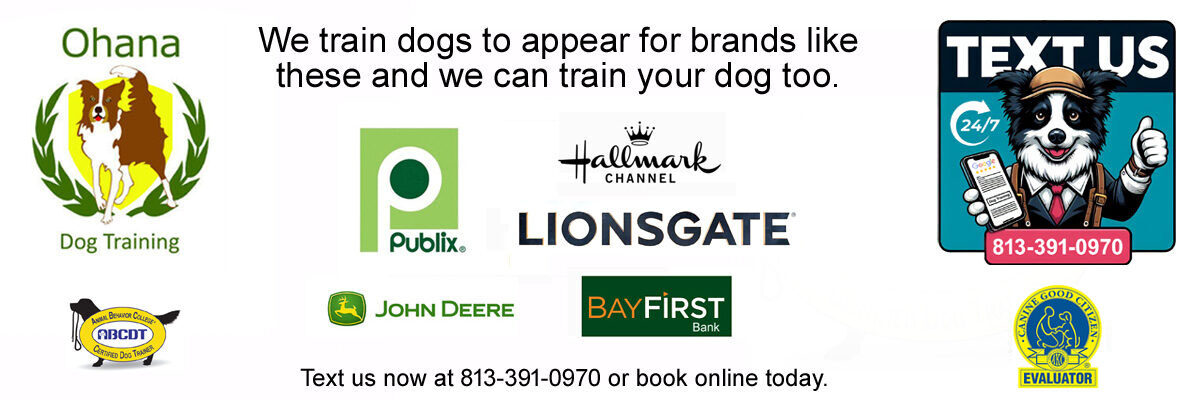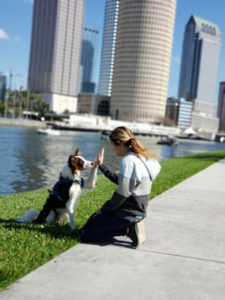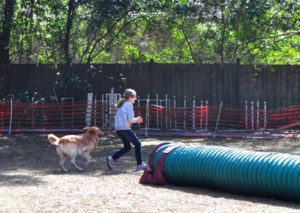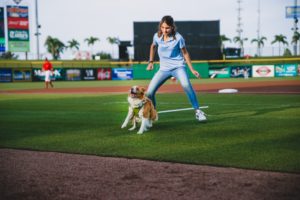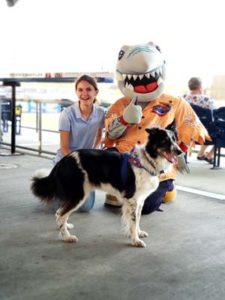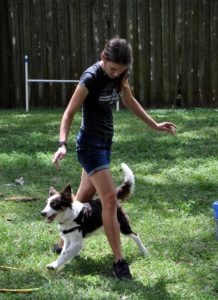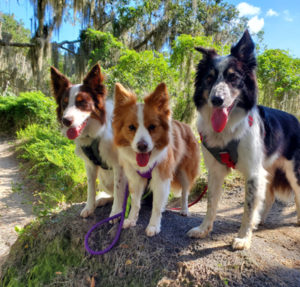One popular topic that is bound to come up on your dog training journey is the mention of tools, and how to use them properly. As with anything, there are correct and incorrect methods of using any of these training tools on your dog. Tool use also varies from dog to dog, but here are some definite “do’s” and “don’ts” to remember when considering the use of tools on your pup!
Leash


A leash is a tool that attaches to the collar or other tool of your choice and can be used as a communication tool to your dog during training sessions. Leashes are wonderful to give your dog proper feedback on how their training session is going, and if the dog is pulling excessively, pressure or corrections can be given to help show the dog where you would like them to be. Every dog will respond differently to training, so the most important thing to remember is that you select a trainer who helps you and your individual dog, whether they are a positive reinforcement or balanced trainer! Although there re many different brands of leashes and the one you select all depends on your personal preference, I have attached a link to the Mile High Mountain Climbing Dog Leash that I use for all of my pups.
Flat Collars


A Flat Collar is the collar that you typically would attach your dog’s tags and identification information to. Flat Collars are wonderful tools as either as a back-up to your primary training collar, or for dogs that have already learned how to walk on a leash well and respond very well to you and your training. Flat Collars come in the form of Buckle and Plastic Clip. One drawback of flat collars is they offer no clear communication for redirection or correction to pulling behavior, and some untrained dogs may pull at their leash until they gag or choke themselves. Dogs can also easily slip out of flat collars by backing out of them, and run into busy streets with oncoming traffic. Unless you have an extremely well-behaved and trained dog, I would recommend against using this as your primary collar to clip your leash to, and instead use the collar as a back-up to your primary collar and as your collar to attach your dog’s name tags to. I highly recommend slide-on name tags or nameplates so they do not become caught on crate wires or other objects. Flat collars can be beautiful for display and a useful way to store your information if your pet should ever become lost.
Training Harnesses


Training Harnesses can have a variety of purposes. While some training harnesses are made to encourage dogs to pulls (such as sledding or working dog harnesses) the use of “no-pull” harnesses is becoming increasingly popular in this day and age. Because harnesses were originally made for working dogs pulling loads, it is important to remember when buying a no-pull training harness that you never clip your leash to the attachment located at the back of the harness. This will merely encourage your dog to pull you and you will become…you guessed it…the load! Instead of buying a harness that clips in the back, try to buy one that clips in the front (or a special leash that clips to both) instead. This will help redirect your dog back to you if they begin to pull too much on the leash, with the help of food rewards and motivation. If this tool doesn’t do the trick for your dog, then it may be time to consider a different tool for your pup. I would recommend both the Freedom Harness and Balance Harness.
The Head Halter


Head Halters are another tool that can sometimes help discourage your dog from pulling. It is a tool that slips over your dog’s head and snout (similar to a horse halter) and also clips in to their collar for safety during use. This is another tool that like the training harness, can help guide your dog back to you if they begin to pull. Guidance with this type of collar should always be given gently, as a harsh correction could potentially injure your dog. Another drawback to these types of collars is that many dogs consider them to be aversive, meaning it takes a lot of condition to get the dog comfortable enough too even use one. My two favorite brands of Head Halter are the Halti and the Gentle Leader.
The Martingale


A martingale collar is a collar that either slides over your dog’s head or clips and provides a limited amount of pressure when pulling to help better communicate with your dog when walking on a leash. It is also much harder for a dog to slip or back out of a martingale collar than a flat collar. Most dogs usually will not find this type of collar aversive, but it depends on the dog. There are few drawbacks to this collar in my opinion. The martingale collar that I recommend is the Murom Martingale Dog Collar pictured above.
The Slip Lead


Slip Leads are similar to martingales, and slide over your dogs head. Although unlike a martingale, the lead will continue to tighten if they are pulling excessively at the leash. Some slip leads are limited, and do not continue to tighten. The kind of slip lead you need all depends on your dog, and what they respond best too! Slip leads should be used as training tools, and in their proper use, never should be used to choke a dog. If you notice your dog beginning to gag, then it may be time to consider a limited slip lead or slip lead with a martingale type end that slips over your dog’s head. You do not need a collar if you are using a slip lead to walk or train your dog, since the leash itself essentially doubles as a collar. However, you may want to still attach a collar with your information to the collar in case your dog somehow should get loose. Even still, it is very hard for a dog to get out of a slip lead which is one of my favorite benefits of this tool! I recommend and use the Mendota Pet Slip Lead.
The Prong Collar


Prong Collars (also sometimes called a pinch collar) come in many different brands and sizes. However, the Herm Sprenger is the only brand of prong collar that evenly distributes pressure around your dog’s neck. This is important, as to prevent your dog from being injured by the collar. It’s also imperative to buy a prong collar that is properly sized and fitted to your dog’s neck. Your prong collar should never be dangling from your dog’s neck (like a poorly fitted necklace). The most effective use of a prong collar is always placed high on the neck as possible, under the dog’s chin and behind the dog’s ears to give corrections. However, sometimes prongs may be placed lower on the neck for agitation purposes (or to give a lesser correction). The prong should always be tight enough around the dog’s neck to prevent injury. It is important to consult a trainer prior to using a prong collar in order to determine the correct usage of the tool prior to using it on the dog.
The E-Collar


Electronic Collars, or “e-collars” as they are commonly called by experienced trainers, can be extremely useful tools when trying to refine a certain behavior or when teaching an off-leash recall to your dog. I love my Mini Educator and it is the main brand I recommend for e-collar training use. It is important to properly condition your dog to an e-collar prior to use so they do not become resentful of the tool. Training with an e-collar can allow your dog to experience freedom that otherwise they may not be able to experience, and can be great for off-leash training in safe places. Please do not buy a cheap e-collar and use it to fry your dog. If someone refers to this tool as a “shock”collar, they likely are referring to the improper usage of the tool. The Mini Educator has 100 different settings so you can adjust to whatever level your dog needs for what you are working on in training. You should always consult a professional dog trainer prior to using one of these collars on your dog to ensure that you are using the collar properly for your dog.
The Fursaver


A fursaver is a simple collar that slips over your dog’s head and can be used for training or aesthetic purposes. The collar should resemble a “P” for perfect, so it won’t lock in place. The main draw for me to a fursaver is that it will not damage your dog’s beautiful coat (especially if you have a double coated breed). They also can be useful for training purposes in the right situation and context, depending on your dog. Herm Sprenger also makes it and sells fursaver collars, which is the only brand of this collar I would recommend.
The Muzzle


A muzzle can be a useful tool for dogs are reactive or have shown signs of aggression, that may bite in any given circumstance. This can be dogs that have a tendency to snap on other dogs, and it also can be dogs that otherwise would not tolerate being groomed, having their nails trimmed, etc. Muzzles should be breathable for your dog. Reactive dogs deserve to get to live their lives too, and a muzzle is a great management tool to allow these dogs to do so safely. I have used and would recommend the Baskerville muzzle.
